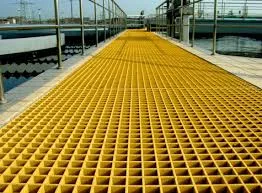
-
 Afrikaans
Afrikaans -
 Albanian
Albanian -
 Amharic
Amharic -
 Arabic
Arabic -
 Armenian
Armenian -
 Azerbaijani
Azerbaijani -
 Basque
Basque -
 Belarusian
Belarusian -
 Bengali
Bengali -
 Bosnian
Bosnian -
 Bulgarian
Bulgarian -
 Catalan
Catalan -
 Cebuano
Cebuano -
 China
China -
 China (Taiwan)
China (Taiwan) -
 Corsican
Corsican -
 Croatian
Croatian -
 Czech
Czech -
 Danish
Danish -
 Dutch
Dutch -
 English
English -
 Esperanto
Esperanto -
 Estonian
Estonian -
 Finnish
Finnish -
 French
French -
 Frisian
Frisian -
 Galician
Galician -
 Georgian
Georgian -
 German
German -
 Greek
Greek -
 Gujarati
Gujarati -
 Haitian Creole
Haitian Creole -
 hausa
hausa -
 hawaiian
hawaiian -
 Hebrew
Hebrew -
 Hindi
Hindi -
 Miao
Miao -
 Hungarian
Hungarian -
 Icelandic
Icelandic -
 igbo
igbo -
 Indonesian
Indonesian -
 irish
irish -
 Italian
Italian -
 Japanese
Japanese -
 Javanese
Javanese -
 Kannada
Kannada -
 kazakh
kazakh -
 Khmer
Khmer -
 Rwandese
Rwandese -
 Korean
Korean -
 Kurdish
Kurdish -
 Kyrgyz
Kyrgyz -
 Lao
Lao -
 Latin
Latin -
 Latvian
Latvian -
 Lithuanian
Lithuanian -
 Luxembourgish
Luxembourgish -
 Macedonian
Macedonian -
 Malgashi
Malgashi -
 Malay
Malay -
 Malayalam
Malayalam -
 Maltese
Maltese -
 Maori
Maori -
 Marathi
Marathi -
 Mongolian
Mongolian -
 Myanmar
Myanmar -
 Nepali
Nepali -
 Norwegian
Norwegian -
 Norwegian
Norwegian -
 Occitan
Occitan -
 Pashto
Pashto -
 Persian
Persian -
 Polish
Polish -
 Portuguese
Portuguese -
 Punjabi
Punjabi -
 Romanian
Romanian -
 Russian
Russian -
 Samoan
Samoan -
 Scottish Gaelic
Scottish Gaelic -
 Serbian
Serbian -
 Sesotho
Sesotho -
 Shona
Shona -
 Sindhi
Sindhi -
 Sinhala
Sinhala -
 Slovak
Slovak -
 Slovenian
Slovenian -
 Somali
Somali -
 Spanish
Spanish -
 Sundanese
Sundanese -
 Swahili
Swahili -
 Swedish
Swedish -
 Tagalog
Tagalog -
 Tajik
Tajik -
 Tamil
Tamil -
 Tatar
Tatar -
 Telugu
Telugu -
 Thai
Thai -
 Turkish
Turkish -
 Turkmen
Turkmen -
 Ukrainian
Ukrainian -
 Urdu
Urdu -
 Uighur
Uighur -
 Uzbek
Uzbek -
 Vietnamese
Vietnamese -
 Welsh
Welsh -
 Bantu
Bantu -
 Yiddish
Yiddish -
 Yoruba
Yoruba -
 Zulu
Zulu
Innovative Approaches to FRP Absorber Design and Performance Enhancement
Understanding FRP Absorbers Applications and Advantages
Fiber Reinforced Polymer (FRP) absorbers have emerged as a pivotal component in various engineering applications, particularly in the realms of civil, mechanical, and aerospace engineering. These advanced materials, composed of a polymer matrix reinforced with fibrous materials, exhibit exceptional properties, making them ideal for a variety of applications, especially in vibration damping and noise reduction. This article delves into the significance of FRP absorbers, their applications, and their numerous advantages.
What is an FRP Absorber?
An FRP absorber is designed to reduce the energy of vibrations and sound waves. The key component of an FRP absorber is its composite structure, which allows it to effectively dissipate vibrational energy through its unique material properties. The fibers used in the matrix—commonly glass, carbon, or aramid fibers—provide strength and rigidity, while the polymer matrix offers flexibility and durability. Together, these components create a material that can effectively manage vibrations and sound, making it invaluable in various industries.
Applications of FRP Absorbers
FRP absorbers find a wide range of applications across different sectors
1. Civil Engineering In the construction of buildings, bridges, and other structures, FRP absorbers are employed to mitigate vibrations caused by wind, seismic activities, and human activities. By incorporating these absorbers into the design, engineers can enhance the structural integrity and longevity of buildings while improving the comfort of occupants.
2. Transportation In the automotive and aerospace industries, FRP absorbers play a crucial role in minimizing noise and vibrations that can hinder performance and passenger comfort. For instance, car manufacturers utilize FRP materials in body panels and chassis to reduce weight without sacrificing strength, thereby improving fuel efficiency and reducing emissions.
3. Industrial Machinery Machinery and equipment often experience vibrations that can lead to mechanical failure over time. FRP absorbers are used to dampen these vibrations, prolonging the lifespan of machines and reducing maintenance costs.
frp absorber

Advantages of FRP Absorbers
The benefits of utilizing FRP absorbers are manifold
1. Lightweight Composition One of the most notable advantages of FRP materials is their lightweight nature. This quality makes them particularly advantageous in applications where weight reduction is crucial, such as in aerospace and automotive industries.
2. High Strength-to-Weight Ratio FRP absorbers possess an impressive strength-to-weight ratio, ensuring they can endure significant stress and strain without compromising performance. This attribute allows for innovative designs that maintain structural integrity while minimizing material usage.
3. Corrosion Resistance FRP materials are inherently resistant to corrosion, making them suitable for use in environments where exposure to harsh chemicals or moisture is a concern. This resistance translates to lower maintenance and replacement costs over time.
4. Customization FRP absorbers can be tailored to specific requirements, including dimensions, shapes, and mechanical properties. This versatility allows engineers and designers to create solutions that best fit their unique needs.
5. Efficient Vibration Damping FRP materials display remarkable ability to dissipate vibrational energy efficiently. This characteristic not only reduces noise levels but also protects sensitive machinery and equipment from damage.
Conclusion
FRP absorbers represent a significant advancement in materials science, providing effective solutions for vibration damping and noise reduction across various applications. Their lightweight, durable, and customizable nature makes them an invaluable resource in modern engineering. As industries continue to innovate and seek enhanced performance, FRP absorbers are likely to play an increasingly important role in engineering designs, contributing to improved safety, efficiency, and comfort in numerous applications. With ongoing research and development, the future of FRP technology holds exciting possibilities that could further transform how we address vibration and noise-related challenges.









